 W
WThe culture of Bengal defines the cultural heritage of the Bengali people native to eastern regions of the Indian subcontinent, mainly what is today Bangladesh and the Indian states of West Bengal, Tripura and Assam's Barak Valley, where the Bengali language is the official and primary language. Bengal has a recorded history of 1,400 years. The Bengali people are its dominant ethnolinguistic group. The region has been a historical melting point, blending indigenous traditions with cosmopolitan influences from pan-Indian subcontinental empires. Bengal was considered to be the richest part of Islamic medieval India and during the era of the Bengal Sultanate it was described to be a major trading nation in the world, while during Mughal times, having triggered the proto-industrialization, its economy was worth 12% of global GDP. However, significant socio-economic inequalities existed during this period. As a part of the Bengal Presidency, it also hosted the region's most advanced political and cultural centers during British rule. Historically Feudalism has been widespread in the entire eastern Indian region. The feudal system flourished to a large extent under the British administration, which served as a means to exploit the Indian peasants by the British colonizers. This created a class of rich landlords in Bengal and a large population of poor peasants. It is noteworthy that a major portion of the Bengali intellectual community during the British era emerged from this wealthy class of landlords, as primarily they belonged to well educated families and got the economic opportunities to receive English education, often from abroad. The lower social classes remained in abject poverty and illiteracy. Thus, although the contribution of the Bengali intellectual community has been immense towards literature, science, politics and the Indian freedom movement, but still as it flourished under an exploitative imperial government, it mostly constituted of individuals belonging to the wealthy landlord families.
 W
WThe East Zone Cultural Centre has its headquarters in Sector III, IB 201, IB Block, Salt Lake City, Kolkata, which is also known as the Cultural Capital of India and most commonly City of Joy is situated in the Indian state of West Bengal.It is one of the seven Zones established in India.The Indian states which are under the Eastern Cultural Zone are West Bengal, Jharkhand, Bihar, Odisha, Assam, Tripura, Manipur, Sikkim, Andaman & Nicobar Islands. This zone is home to three classical dance Odissi, Sattriya and Manipuri dance. Classical music Odissi music and semi-classical music Rabindra Sangeet.
 W
WAlkap is a Bengali folk dance popular in the districts of Murshidabad, Malda and Birbhum in West Bengal and Chapai Nawabganj, Randajshahi in Bangladesh. It has also spread to the adjoining areas of Jharkhand and Bihar such as Dumka and Purnia.
 W
WAlta, alah or mahavar is a red dye that is applied to the hands and feet of women, mainly in the Indian subcontinent. It is applied with a cotton swab or brush to the hands and feet during marriage ceremonies and festivals.
 W
WThe architecture of Bengal, which comprises the modern country of Bangladesh and the Indian states of West Bengal, Tripura and Assam's Barak Valley, has a long and rich history, blending indigenous elements from the Indian subcontinent, with influences from different parts of the world. Bengali architecture includes ancient urban architecture, religious architecture, rural vernacular architecture, colonial townhouses and country houses and modern urban styles. The bungalow style is a notable architectural export of Bengal. The corner towers of Bengali religious buildings were replicated in medieval Southeast Asia. Bengali curved roofs, suitable for the very heavy rains, were adopted into a distinct local style of Indo-Islamic architecture, and used decoratively elsewhere in north India in Mughal architecture.
 W
WThe Baul or Bauls are a group of mystic minstrels of mixed elements of Tantra, Sufism, Vaishnavism and Buddhism, from the Bengal region, comprising Bangladesh and the Indian states of West Bengal, Tripura and Assam's Barak Valley. Bauls constitute both a syncretic religious sect and a musical tradition. Bauls are a very heterogeneous group, with many sects, but their membership mainly consists of Vaishnava Hindus and Sufi Muslims. They can often be identified by their distinctive clothes and musical instruments. Lalon Shah is regarded as the most celebrated Baul saint in history.
 W
WBengal studies is an interdisciplinary academic field devoted to the study of the Bengali people, culture, language, literature, and history. The focus of this field, which qualifies as area studies and cultural studies, is on Indic Bengalis who follow an indigenous system of faith and refer to themselves as Bengalis. It is a subset of South Asian studies or Indology.
 W
WBengali literature denotes the body of writings in the Bengali language. Bengali has developed over the course of roughly 1,300 years. The earliest extant work in Bengali literature is the Charyapada, a collection of Buddhist mystic songs in Old Bengali dating back to the 10th and 11th centuries. The timeline of Bengali literature is divided into three periods − ancient (650-1200), medieval (1200-1800) and modern. Medieval Bengali literature consists of various poetic genres, including Hindu religious scriptures, Islamic epics, Vaishnava texts, translations of Arabic, Persian and Sanskrit texts, and secular texts by Muslim poets. Novels were introduced in the mid-19th century. Nobel Laureate Rabindranath Tagore is the best known figure of Bengali literature to the world. Kazi Nazrul Islam, notable for his activism and anti-British literature, was described as the Rebel Poet and is now recognised as the National poet of Bangladesh.
 W
WBengali poetry is a rich tradition of poetry in the Bengali language and has many different forms. Originating in the Bengal region of South Asia, the history of Bengali poetry underwent three successive stages of development: poetry of the early age, the Medieval period and the age of modern poetry which was introduced in the 1930s. The national poet of Bangladesh, the country with the highest number of native Bengali speakers, is Kazi Nazrul Islam - a 20th-century writer infamous for his activism against British colonial rule through revolutionary works such as Bidrohi (Rebel).
 W
WThe Bengal Renaissance, also known as the Bengali Renaissance, was a cultural, social, intellectual, and artistic movement that took place in the Bengal region of the British Raj, from the late 18th century to the early 20th century. Historians have traced the beginnings of the movement to the victory of the British East India Company at the 1757 Battle of Plassey, as well as the works of reformer Raja Rammohan Roy, considered the "Father of the Bengal Renaissance," born in 1772. Nitish Sengupta stated that the movement "can be said to have … ended with Rabindranath Tagore," Asia's first Nobel laureate.
 W
WBengalis, also rendered as Bangalee or the Bengali people, are an Indo-Aryan ethnolinguistic group originating from and culturally affiliated with the Bengal region of South Asia. The native population is divided between the independent country Bangladesh and the Indian states of West Bengal, Tripura and Assam's Barak Valley. Most of them speak Bengali, a language from the Indo-Aryan language family.
 W
WBhadralok bhôdrôlok, literally 'gentleman', 'well-mannered person') is Bengali for the new class of 'gentlefolk' who arose during British rule in India in the Bengal region in the eastern part of the Indian subcontinent.
 W
WBanbibi, the lady of the forest, also Bandevi, Bandurga and Byaghradevi is a guardian spirit of the forests venerated by both the Hindu and the Muslim residents of the Sundarbans. She is called upon mostly by the honey-collectors and the woodcutters before entering the forest for protection against the attacks from the tigers. It is believed that the demon king, Dakkhin Rai, an arch-enemy of Banbibi actually appears in the disguise of a tiger and attacks human beings.
 W
WA Bou bhat —or sometimes known as walima among Bengali Muslims—is a post-wedding ritual held usually one or two days after a Bengali wedding. In this ceremony a party is hosted by the groom's father or family, where the both bride's and groom's family members and friends are invited. A grand banquet is held at the end of the party which is called Preetibhoj or Preetibhoja and is similar to a gala dinner. In Bengali Muslim wedding after the bou bhat party, the bride and groom go to the bride's family's house for two nights. On the second day, the groom's family is invited to the bride's house for a meal, and they leave with the bride and groom. This meal is called firani or araiya. Shopping is done by the groom for this meal.
 W
WThe Bengali Calendar or Bangla Calendar, colloquially, is a luni-solar calendar used in the Bengal region of the Indian subcontinent. A revised version of the calendar is the national and official calendar in Bangladesh and an earlier version of the calendar is followed in the Indian states of West Bengal, Tripura and Assam. The New Year in the Bengali calendar is known as Pohela Boishakh.
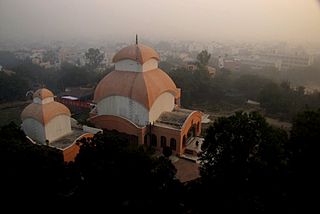 W
WChittaranjan Park Kali Mandir is a temple complex and Bengali community cultural center in Chittaranjan Park in New Delhi, India. Built on a small hill, it started as a Shiv temple in 1973, which still stands within the complex, the larger shrines dedicated to goddess Kali, Shiva, and Radhakrishna were added in 1984. Over the years it has remained an important centre of convergence of local Bengali community during annual Durga Puja festivities.
 W
WKrishna Chandra Das (1869–1934), commonly referred to as K.C. Das, was a Bengali confectioner, entrepreneur, businessman and Bengali cultural icon of the early 20th century. Born in the year 1869 in Bagbazar, Kolkata, Krishna Chandra was the only son and successor of the Bengali confectioner and sweetmeat inventor Nobin Chandra Das. Krishna Chandra was a versatile enthusiast with a spirit of scientific exploration. He developed an electric loom, a soda fountain machine, did extensive research on homeopathy, and researched eastern and western classical music. Krishna Chandra Das became an iconic figure in the 1930s Kolkata with his original creation the "Rossomalai" and the vacuum canned "Rossogolla", which were popularized and promoted throughout India by his family organization K.C. Das Private Limited, founded by Krishna Chandra's son and successor Sarada Charan Das.
 W
WNobin Chandra Das (1845–1925) was a Bengali confectioner, entrepreneur, businessman and Bengali cultural icon of the second half of 19th century and early 20th century. Widely known as the creator of the iconic Bengali sweetmeat "Rosogolla", a popular limerick of 19th-century Bengal labeled him as the "Columbus of Rossogolla" or simply the "Father of Rosogolla".
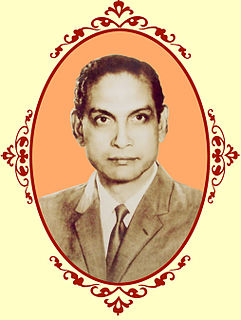 W
WSarada Charan Das was an Indian Bengali polymath, scientist, confectioner, entrepreneur and businessman. He was the youngest son and successor of Krishna Chandra Das and the grandson of the legendary Bengali confectioner Nobin Chandra Das. Born on 15 May 1906, he established the first confectionery company in India, named K.C. Das Private Limited, in 1946. Sarada Charan also created artwork and competed for India at the 1956 Summer Olympics in weightlifting. He is considered as the founding father of K.C. Das Private Limited and a major innovator and pioneer of the Bengali sweetmeat industry due to his contributions towards revamping, modernizing and scientifically standardizing the confectionery industry.
 W
WA date palm leaf pati is a traditional handmade furniture and house decoration. It was part of the cultural heritage of the village of Bengal, but fell out of use.
 W
WDesi is a word used to describe the people, cultures, and products of the Indian subcontinent and their diaspora, derived from Sanskrit देश (deśá), meaning "land, country". Desi traces its origin specifically to the people of the countries India, Pakistan, and Bangladesh.
 W
WDhokra is non–ferrous metal casting using the lost-wax casting technique. This sort of metal casting has been used in India for over 4,000 years and is still used. One of the earliest known lost wax artefacts is the dancing girl of Mohenjo-daro. The product of dhokra artisans are in great demand in domestic and foreign markets because of primitive simplicity, enchanting folk motifs and forceful form. Dhokra horses, elephants, peacocks, owls, religious images, measuring bowls, and lamp caskets etc., are highly appreciated. The lost wax technique for casting of copper based alloys has also been found in China, Egypt, Malaysia, Nigeria, Central America, and other places.
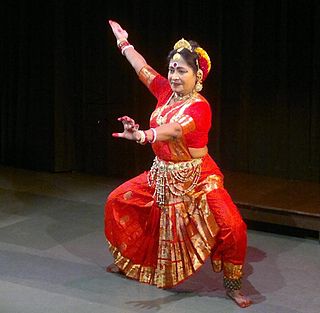 W
WGaudiya Nritya or Gauriya Nritya, is a Bengali dance tradition. It originates from Gauda, also known as Gaur, in Bengal.
 W
WGaye Holud or Gatro Horidra (গাত্র-হরিদ্রা) is a ceremony observed mostly in Bangladesh and in the Indian state of West Bengal, Tripura & Assam by all Bengalis regardless of their religion.
 W
WGazi Pir was a Bengali Muslim pir (saint) who lived in the 12th or 13th century during the spread of Islam in Bengal. He was known for his power over dangerous animals and controlling the natural elements. As the new local Muslim population of southern Bengal were settling in the dense forests of the Ganges delta, these were important qualities. His life is shown on the "Gazi Scroll", a scroll with 54 paintings from circa 1800, which is currently in the British Museum in London, England.
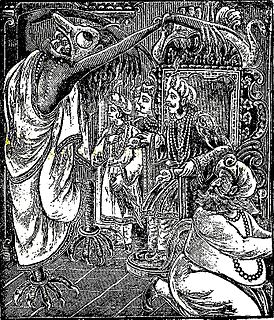 W
WGhosts are an important part of the folklore and integral to the socio-cultural fabric of the geographical and ethno-linguistic region of Bengal which presently consists of Bangladesh, Barak Valley in Assam and the Indian states of West Bengal and Tripura. Fairy tales, both old and new, often use the concept of ghosts. References to ghosts are often found in modern-day Bengali literature, cinema, radio & television media. There are also many alleged haunted sites in the region. The common word for ghosts in Bengali is bhoot or bhut. This word has an alternative meaning: 'past' in Bengali. Also, the word Pret is used in Bengali to mean ghost. In Bengal, ghosts are believed to be the unsatisfied spirits of human beings who cannot find peace after death or the souls of people who died in unnatural or abnormal circumstances like murders, suicides or accidents. Non-human animals can also turn into ghosts after their death.
 W
WGirish Mancha is a theatre auditorium located in Bagbazar, Kolkata, West Bengal, India. The auditorium was inaugurated on 1 July 1986 by Chief Minister of West Bengal Jyoti Basu. The auditorium was named after Girish Chandra Ghosh.
 W
WJatra is a popular folk-theatre form of Odia theatre, Bengali theatre, spread throughout most of Odia, Bengali speaking areas of the Indian subcontinent, including Bangladesh and Indian states of Odisha, West Bengal, Bihar, Assam and Tripura As of 2005, there were some 55 troupes based in Calcutta's old Jatra district, Chitpur Road, and all together, jatra is a $21m-a-year industry, performed on nearly 4,000 stages in West Bengal alone, where in 2001, over 300 companies employed over 20,000 people, more than the local film industry and urban theatre.
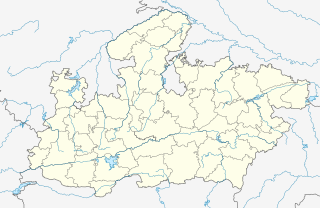 W
WKali Bari Chhindwara is a temple dedicated to Goddess Kali and the center of Bengali culture in Chhindwara, India. Established in 1995, the deity in the temple is Maa Kali.
 W
WKalighat painting or Kalighat Pat originated in the 19th century in West Bengal, India, in the vicinity of Kalighat Kali Temple, Kalighat, Calcutta, and from being items of souvenir taken by the visitors to the Kali temple, the paintings over a period of time developed as a distinct school of Indian painting. From the depiction of Hindu gods, god, and other mythological characters, the Kalighat paintings developed to reflect a variety of subjects, including many depictions of everyday life.
 W
WKavigan, Kobi Gaan, Kobi Lorai or Kabigan is a form of Bengali folk performance wherein folk poets sing and perform. A verbal duel among the poets, this mystic minstrels art was popular with rural folk form in nineteenth century in Bengal region, which includes the Indian state of West Bengal and Bangladesh.. The mythological themes from both Hindu and Muslims religious texts were commonly used for Kobi Gaan.
 W
WKhoai Mela or Shonibarer haat is a weekly Saturday afternoon bazaar set up by local artisans in Santiniketan, Birbhum district, West Bengal. The Khoai Mela has now become a part of the culture of the Bengali people and has been taking place for over 20 years. It takes place every Saturday on the bank of the Khoai or Kopai River. The Mela is named after this Khoai region and River. This Mela is also called Shanibarer haat due to its opening day.
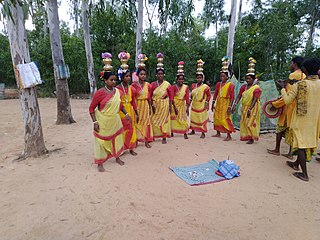 W
WThe Lungi Panchi Dance is a traditional dancing style of the Santal people of West Bengal. This dance is performed by both men and women and is accompanied by traditional music.
 W
WMala badal is part of the traditional Bengali wedding ceremony that involves the exchange of flower garlands between the bride and bridegroom, and is supposed to mark the first time when the bride and the bridegroom set eyes on each other. It is a ritual that is carried forward from the past, as the practice of not seeing each other before is hardly practised these days. Nevertheless, the mala badal marks the first time during the wedding that the bride and the groom are allowed to see each other.
 W
WMuslin is a cotton fabric of plain weave. It is made in a wide range of weights from delicate sheers to coarse sheeting. It gets its name from the city of Mosul, in Iraq, where it was first manufactured. In the 17th and 18th centuries Dacca in Bengal was regarded as producing the finest muslins.
 W
WNobanno is a Bengali harvest celebration usually celebrated with food and dance and music in Bangladesh and in the Indian states of West Bengal, Tripura and Assam's Barak Valley. It is a festival of food; many local preparations of Bengali cuisine like pithe are cooked.
 W
WNakshi kantha, a type of embroidered quilt, is a centuries-old Bengali art tradition of the Bengal region, notable in Bangladesh and Indian states of West Bengal, Tripura and part of Assam. The basic material used is thread and old cloth. Nakshi kanthas are made throughout Bangladesh, but the greater Mymensingh, Jamalpur, Bogra, Rajshahi, Faridpur and Jessore areas are most famous for this craft.
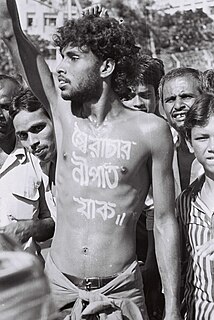 W
WNoor Hossain Day is a national day in Bangladesh observed every 10 November in order to commemorate the martyrdom of Noor Hossain while protesting for the establishment of democracy in the country against the autocratic rule of Hussain Muhammad Ershad in 1987. Noor Hossain who was a motor driver by profession was killed by the police force. At the time he was shot, his body carried several slogans in white paint. He wore the slogan "Down with autocracy" on his chest, and on his back, he had written the slogan "Let Democracy Be Free". The day is honored each year as cultural and political organizations sponsor special programs for observance the day. It was first called "Historic November 10 observance" but the Awami League supported the phrase "Noor Hossain Day", by which it is known today.
 W
WOladevi is the goddess of cholera and is worshipped by people in the region of Bengal and Marwar. The goddess is also known as Olaichandi, Olabibi and Bibima. She is venerated by Hindus and Muslims of Bengal.
 W
WPohela Falgun, also known as the first day of Spring of the Bengali month Falgun, is a holiday celebrated in Bangladesh. The celebration was started in 1991 by students of Dhaka University's Faculty of Fine Arts. The first of Falgun usually falls on 13 February of the Gregorian Calendar. The holiday in Bangladesh also celebrated as Basanta Utsab,
 W
WThe Panjika is the Hindu astronomical almanac, published in Odia, Maithili, Assamese and Bengali languages and colloquially known as Panji. In other parts of India it is called panchangam. It is amongst the most popular annual books published in India and is a handy reference for observant Hindus to determine the most auspicious times for their rituals, festivals, celebrations, and pursuits of various sorts including marriage, undertaking travels, etc. It is somewhat a ready-reckoner, or the first source, before one approaches a priest or an astrologer to decide on the details. Even "non-believers" amongst Hindus and those who are not Hindus often consult a panjika for much of the practical information it publishes. It also records Muslim, Christian and other festivals, dates of birth and death of many leading personalities and carries informative articles on astrology.
 W
WPoush Mela is an annual fair and festival that takes place in Santiniketan, in Birbhum District in the Indian state of West Bengal, marking the harvest season. Commencing on the 7th day of the month of Poush, the fair officially lasts for three days, although vendors may stay until the month-end as per the university regulations. From 2017 onwards the fair lasted for six days. The key characteristic of this fair include live performances of Bengali folk music, such as baul, kirtan and Kobigan.
 W
WThe Rathayatra of Mahesh is the second oldest chariot festival or Rath Yatra in India and oldest in Bengal, having been celebrated since 1396. It is held in Mahesh, a historical locality within Serampore in the Indian state of West Bengal. It is a week-long festival and a grand fair is held at that time. People throng to have a share in pulling the long ropes (Rosshi) attached to the chariots of Lord Jagannath, Balarama and Subhadra on the journey from the temple to Mahesh Gundicha Bari and back within 8th day.
 W
WSatya Pir is a belief system found in Bengal created by the fusion of Islam and local religions. Experts maintain that the Muslim Satya Pir and the Hindu Satyanarayan Puja essentially represent the same beliefs and rituals. A century ago in Bengal, the ritual called, pujah was mainly performed by Hindu women and was interchangeably called Satya pir Pujah or Satya Narayan pujah.
 W
WShakta Rash or Shakta Rasa or Shakta Ras is the most celebrated festivals of Nabadwip, West Bengal, India. This festival is celebrated thirty-five days after the autumnal Durgapuja celebration or fifteen days after Kali puja in Kartik Purnima. To the people of Nabadwip Rash Festival is everything. The entire commonwealth eagerly wait for this festival all year round.
 W
WShotoronji(শতরঞ্জি) is a traditional handicrafts of the Rangpur region of Bangladesh. It has recently been declared as a Geographical Indication Product of Bangladesh. It is basically a carpet used both as a fashion element and carpet to prevent the bitter cold of its original region. It is used as a carpet or artistic work. Shotoronji is considered as a symbol of aristrocracy in the northern region of Bangladesh. Currently it is one of the most popular exported handicraft products of Bangladesh as Bangladesh exports it to over 50 countries.
 W
WShyama Sangeet is a genre of Bengali devotional songs dedicated to the Hindu goddess Shyama or Kali which is a form of supreme universal mother-goddess Durga or parvati. It is also known as Shaktagiti or Durgastuti.
 W
WSwapnasandhani is a Bengali theater group from Kolkata. The group was founded on 29 May 1992. Swapnasandhani has been marked by the acting and direction of Kaushik Sen.
 W
WVaishnava-Sahajiya is a form of tantric Vaishnavism centred on Bengal, India. It had precursors from the 14th century, but originated in its definitive form in the 16th century.
 W
WBengali Hindu wedding refers to the traditional Bengali wedding, usually with Hindu rites and rituals that are native to the Indian subcontinent.